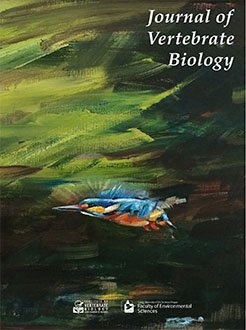Sibling competition leading to physiological stress and elevated allostatic load is driven by asymmetrical development and limited resources. To investigate these predictions, we studied broods of the lesser kestrel Falco naumanni, from a nest-box population in Armenio, Central Greece. For each nestling reared in nest-boxes, we noted the age (in days) since hatching, measured the wing chord length and body mass. We also clipped the central right rectrix for ptilochronology for subsequent analysis in the laboratory. We measured 206 nestlings from 61 broods (range 2-5 nestlings). In the case of nestlings < 18 days old (n = 198, 96.1% of all) we also measured the length of feathers. As a measure of body condition, we used the residuals of the linear regression for the relationship between wing chord length and body mass, while the growth bar width of feathers was used as a second, independent index of body size and allostatic load. A GLMM and information-theory criterion showed that both measures of body condition decreased incrementally from the first sibling to the most subordinate in the brood. Body condition of subordinate siblings was influenced by the number of siblings in the nest; i.e. the larger the brood size the greater the discrepancy in body condition between siblings. At the same time, we did not find any influence of sex on either measure of fitness. Thus, our results indirectly support the hypothesis that sibling competition may cause physiological developmental stress which is reflected in decreased body condition and increased allostatic load for younger nestlings.
How to translate text using browser tools
20 April 2020
Sibling competition affects body condition and allostatic load in the colonial nesting lesser kestrel Falco naumanni
Dimitrios E. Bakaloudis,
Malamati A. Papakosta,
Maya Guy-Yosef,
Jakub Z. Kosicki,
Vassilis Goutner,
Christos G. Vlachos,
Reuven Yosef

Journal of Vertebrate Biology
Vol. 69 • No. 1
April 2020
Vol. 69 • No. 1
April 2020
Greece
growth rate
ptilochronology




